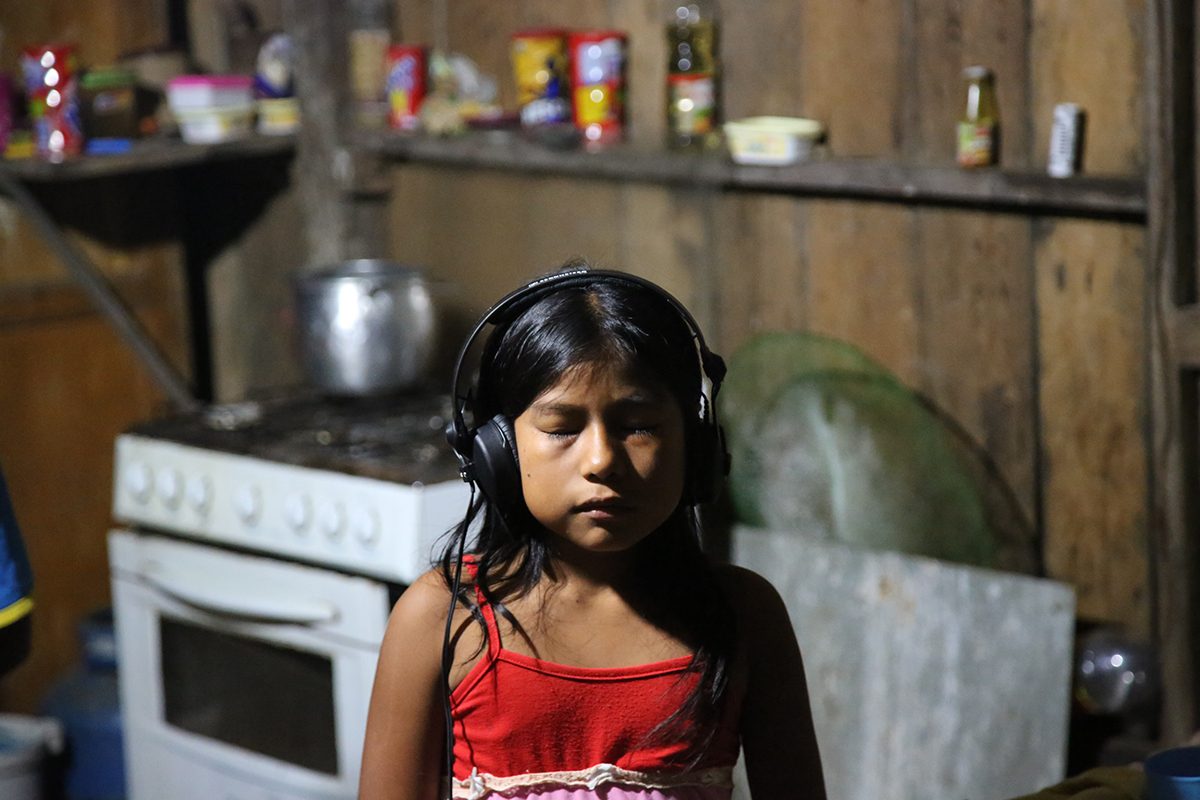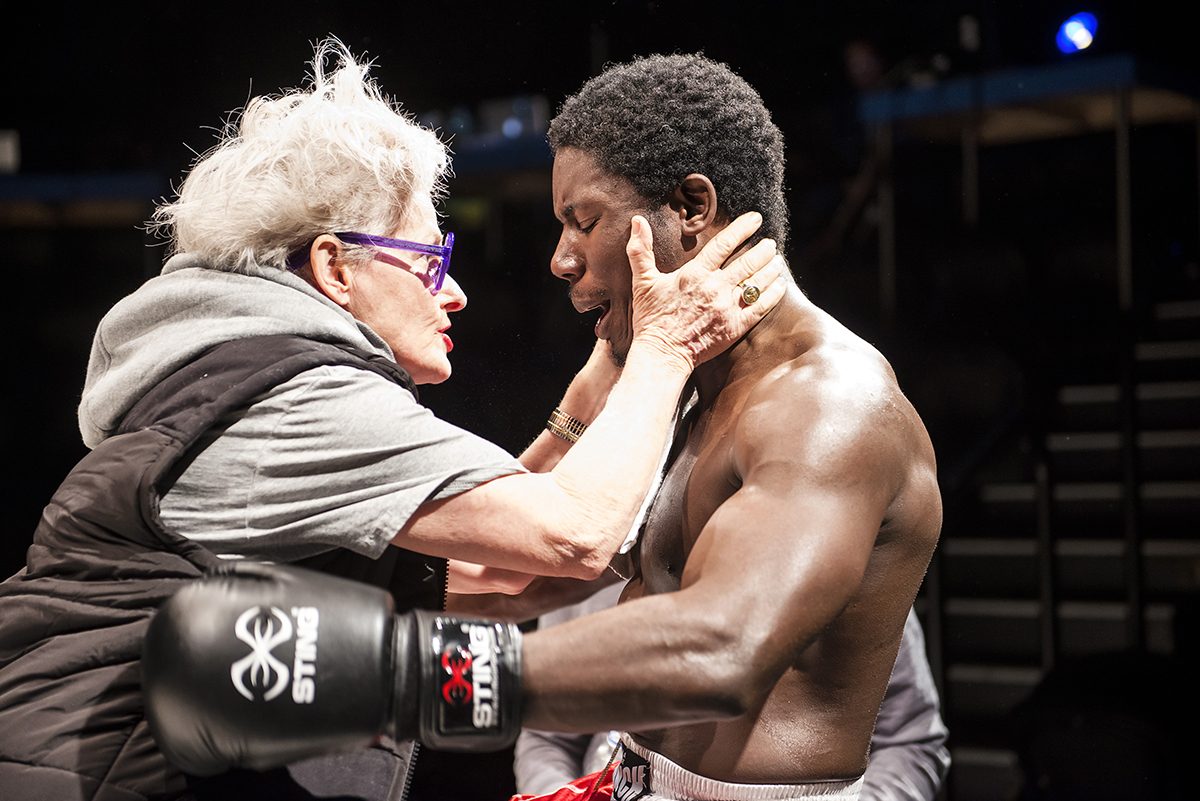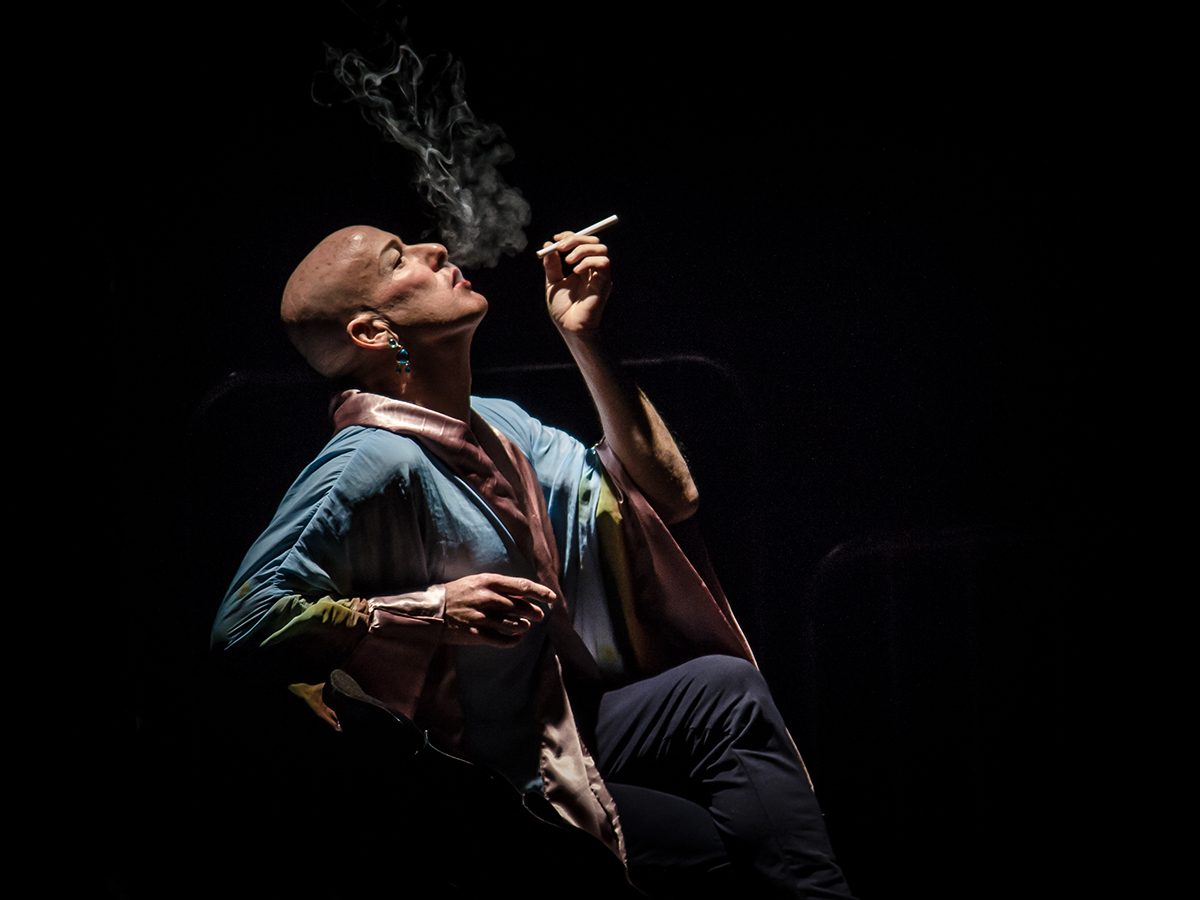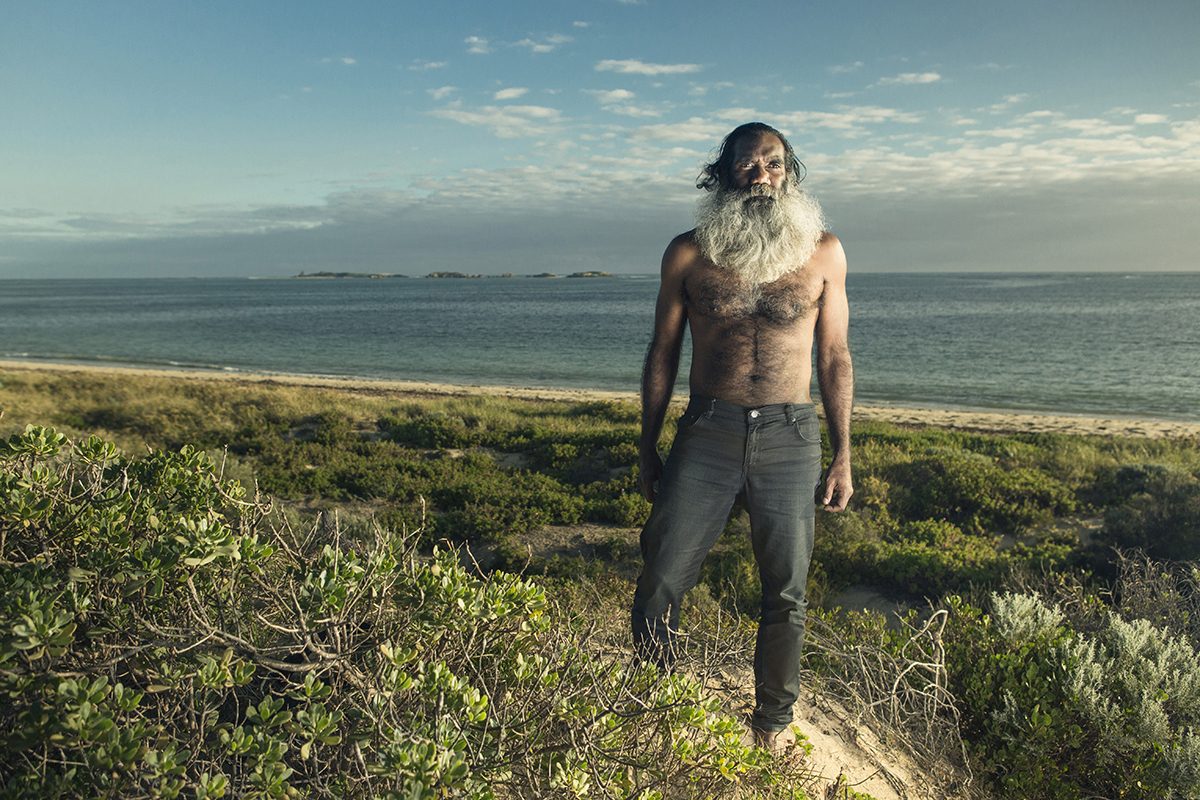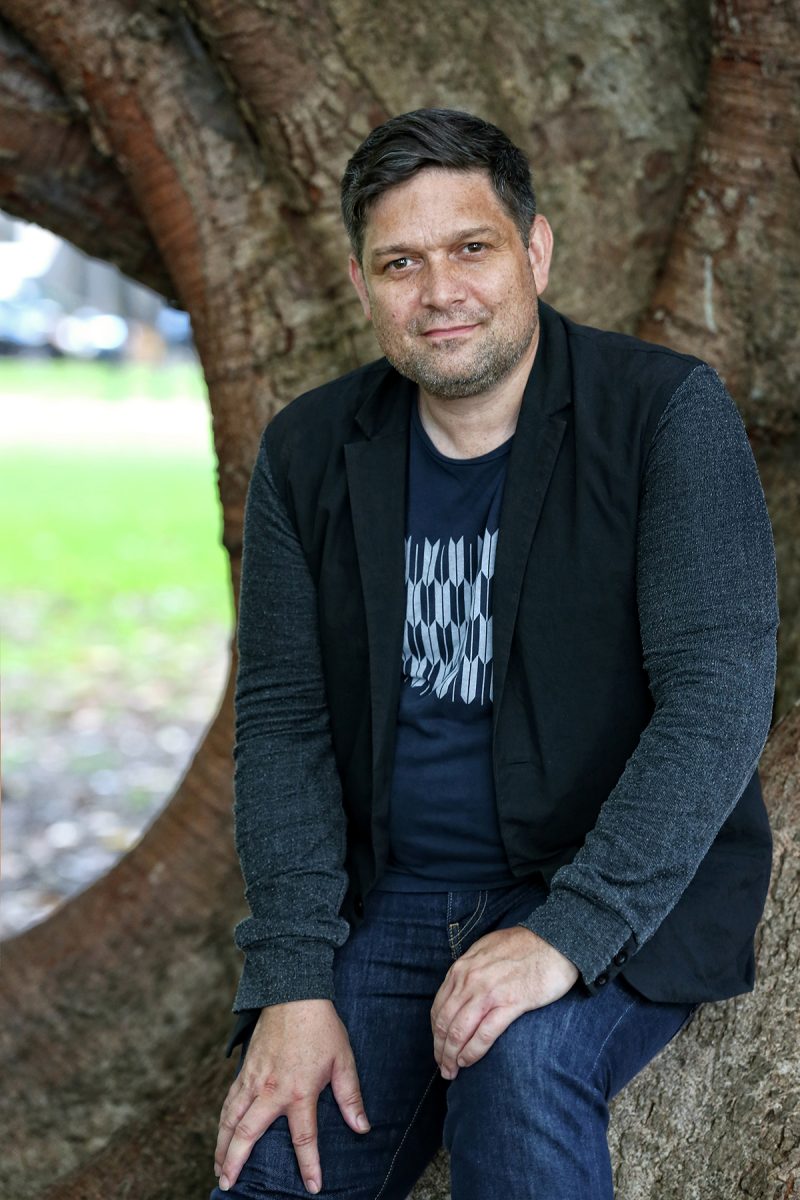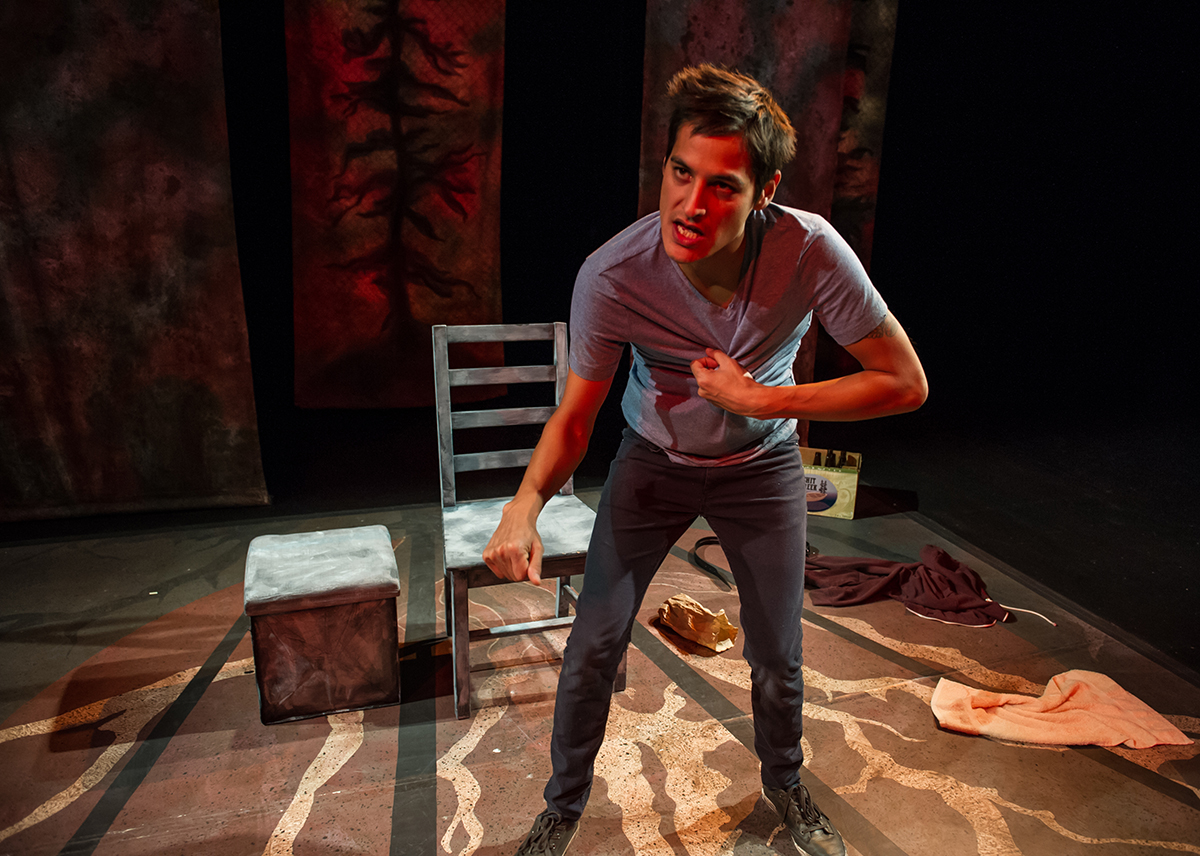
Sydney Festival: A great sense of occasion
At its most overt, Wesley Enoch’s 2017 Sydney Festival programming is about sensory engagement, indigeneity and innovative art-making. Alongside works that challenge the senses there’s a cluster of works by and about First Nations peoples and an overlapping one, principally theatrical, from independent Australian and visiting artists. These are complemented by discrete programs of contemporary circus and Canadian performance amid diverse festival fare from around the world, beyond easy summary.
Unlike most festival directors, Wesley Enoch is, expectedly, forthright about matters social, cultural and political. Although his festival might not be themed top to bottom and despite its considerable breadth, it has a core, the man himself. Towards the end of our conversation in the festival office in the Rocks, he asks rhetorically, how it could be otherwise: “How am I so of this place and of this time that I’m responding and reflecting what’s here?” It’s a question he thinks all festival directors should ask of themselves.
He adds, “When I look through the program, I think my politics are there for everyone to see—my way of seeing the world. The big thing I find challenging is going from being someone who makes theatre to someone who curates a festival. I still think like someone who’s got to make it. It’s not a curated experience this one. It’s about me going, this is what I want to happen; can we make it happen? It’ll succeed or fail or spark conversation or people will go ho-hum. This is what a festival is about.”
DIY festival
The large format program features the colourful festival logo breaking up over a lively black and white portrait of a Sydneysider. There are eight of these selected from public submissions and eight program covers to match, depending which one you pick up. As well as inviting the public to make art, Enoch says play with the festival logo is “all about extensions and connections; about it being broken apart and finding its own way back together again. It’s an invitation to the audience to make their own Sydney Festival, literally from bits and pieces, to have confidence in themselves as individuals now that everyone’s a maker—having at their fingertips the means of production to make a film or do whatever.”
Enoch hopes that the curiosity festivals can excite might counter “the fracturing of our body politic. Individuals are now tribal in the way they see the world and we get a lot of [self-reinforcing] feedback through social media or our choice of news media. Things get reflected back to us that an algorithm says we’ll like. I find that fascinating. It builds a confidence that I don’t always like…We really need to say, ‘Be creative in your own thinking, be curious in the way you see the world, engage with otherness, with difference, so that you bring a quality to your life that is outside your lived experience.'”
Enoch’s program, delineating the sensory, Indigenous, Canadian and circus/physical theatre mini-programs, provides festival-goers with clear starting points for entering what at first glance might appear to be a maze. He underlines the importance of clustering, arguing, “If you do one [of a kind of work], it’s saddled with the idea that it has to be representative of a whole practice. Once you do a number of them you have a diversity of approaches.”
A festival of the senses
A featured festival work is conceptual and olfactory artist Cat Jones’ Scent of Sydney, to be staged at Carriageworks. I mention Indigenous artist Archie Moore’s ‘perfume portrait’ series, Les Eaux d’Amoore, with its robust scents. Enoch recalls, “One of them was stale beer and cigarettes wasn’t it? That was full-on! As we’re living in an increasingly digital, disembodied world in our leisure time, in our work, artists are asking, how do you get back into the corporeal, the body of things? I wonder if we have lost the subtle vocabulary for our senses.”
Cat Jones will tell us about Scent of Sydney in next week’s RealTime. In the meantime, Enoch explains that the scents will be made by the artist in response to the recollections of a small group of participants of the aromas they associate with subjects like democracy, resistance and landscape. Audiences will be able to experience the outcomes and ponder their own associations.
Also on the sensory front, in deafblind artists Heather Lawson and Michelle Stevens’ Imagined Touch the audience wear goggles and earphones to share a quiet, dark, complex world. It can be experienced as a performance or a free installation. House of Mirrors in the Festival Village offers another kind of sensory disorientation. In Encounter, the UK’s Complicite, utilising the depth of field and detail generated by the binaural microphone, takes its headphoned audience on a recreated journey up the Amazon.
Australia’s bold independents
Parramatta’s FORM Dance Projects is mounting Champions. Focused on women’s football, it’s directed by Sydney choreographer Martin del Amo whose engrossing signature works have often sprung from the act of walking—a short step to field moves. Created in consultation with Western Sydney Wanderers W-league, the work features 11 female performers enacting the drills, tactics and rituals of the game and expressing the joys of playing along with the frustrations of imposed gender limitations. We have an interview with del Amo in next week’s RealTime.
Enoch was keen to premiere Champions at Carriageworks: “It doesn’t have to be that Western Sydney is just a colony of Sydney.” Conversely, Ich Nibber Dibber by those proud Westies, post—featuring the astonishing trio reproducing excepts of conversations from their 10-year performance history—will open at Campelltown Arts Centre.
Prize Fighter from Brisbane’s La Boite plays out as a convincing real time boxing match in its telling of the life of a Congolese child soldier relocated to Brisbane. It was written by Future D Fidel, himself a Congolese refugee. Reviewer Kathryn Kelly wrote that it “showcas[ed] the breadth of African-Australian talent in this country with local performers Pacharo and Gideon Mzembe matched by recent NIDA graduate Thuso Lekwape…The opening night felt genuinely significant, evoking descriptions of the first night of Wesley Enoch and Deborah Mailman’s Seven Stages of Grieving at Metro Arts in the 1990s.”
Urban Theatre Projects and Blacktown Arts Centre come together to present Home Country, a work about intra- and cross-cultural tensions—Indigenous, Algerian and Greek—played out in a Blacktown car park from scripts by Andrea James, Peter Polites and Gaele Sobott. Also in Western Sydney is Hakawati from the National Theatre of Parramatta, featuring shared food and song from the Middle East.
Innovative Australian works from across borders include Melbourne’s Patricia Cornelius, with her play Shit (about class and misogyny), Jacob Boehme’s dance theatre work Blood on the Dance Floor from Melbourne’s Ilbijerri Theatre (read the review “To live, dance and love with HIV“), Brisbane’s Circa in Humans, from Tasmania, Terrapin Puppet Theatre’s You and Me and the Space Between and from Cairns, Dancenorth’s Spectra. Enoch says of the strong interstate showing, “I don’t think Sydney sees enough of the work that’s created outside of Sydney. Is that terrible to say?” I’m also interested in what happens when works like Prize Fighter get a rare second outing. There are things that can change, mature. Jacob Boehme’s Blood on the Dance Floor is another example. Aesthetically, it’s a real step on for Indigenous storytelling.”
Indigenous culture: continuity, 1967, language
Enoch’s prominent Indigenous program ranges across theatre, play development, dance and visual arts. The Season, by Tasmanian playwright Nathan Maynard, a descendant of the chief of the Trawlwoolway Clan and of the North East Tasmanian Indigenous peoples, made its first appearance in the 2015 Yellamundie First Nations Peoples Playwriting Festival. I ask Enoch the writer’s age. “Oh, if you told me he was mid-30s I’d believe you; if you told me he was early 40s, I’d believe you—wise old man that he is. The writing reminds me of some of the early Jack Davis work where you have family environments in which cultural continuity is being expressed just through lived action. There’s a lightness of touch, of comedy, that belies a heavy burden, especially coming from Tasmania where the dominant myth is that all Aboriginal people were wiped out.” The Season addresses “cultural continuity around mutton-birding which has gone on for hundreds and thousands of years.” Also in the program is Ilbijerri Theatre’s “road trip comedy,” Which Way Home, by writer-performer Katie Beckett, about a daughter’s relationship with her single-parent father.
In Not An Animal Or A Plant, Vernon Ah Kee responds through drawings, paintings, text and projections to the 1967 Referendum which recognised Aboriginal and Torres Strait Islanders as citizens and included them in the census.”He’s bringing together his work as a conversation about that historical event. I don’t think this country’s even cognisant of the fact that this year is the 50th anniversary. It was such a successful referendum, 90.77% of the population voted. I wonder if it happened now, would it get through? What’s changed?”
The referendum will not be forgotten with the mounting of 1967, Music in the Key of Yes, in the Sydney Opera House Concert Hall, featuring film footage from the period and a stellar line-up of singers: Leah Flannagan, Yirrmal, Dan Sultan, Adalita, Stephen Pigram, Radical Son and Thelma Plum.
Bayala, Let’s Speak Sydney Language, is a very special component of the festival’s Indigenous program, an opportunity to become familiar with—through documents, classes and a “sing-up”—with the once assumed lost languages of the Eora and Darug peoples.
Meeting Canada
Enoch is pleased to be presenting “a big chunk of Canadian work, including Huff by writer-performer Cliff Cardinal from Native Earth Performing Arts [Canada’s oldest professional Indigenous theatre company]. There’s been a lot of exchange between Indigenous Australians and Canadians for quite a while now, especially the further north you go in Australia and through the tri-nation agreement between Australia, New Zealand and Canada over at the past decade.
“Huff literally means to sniff, as in solvent sniffing. It’s a multi-generational story where the performer plays all 20 roles. The youngest of three brothers has the gift from the Creator to make people feel good, and by the end, with all the tortuous things that he observes or that happen to him, he’s lost it. Huff marries the spiritual nature of a lot of First Nations storytelling with this story of growing up. It has a lot of black humour. The storytelling is both beautiful and tragic as you’d expect from any First Nations story. That’s where it works best: I’m laughing, but at the same time, I’m feeling like it’s dragging me under.”
Also from Canada is Company 605 in the dance work Inheritor Album; Tomboy Survival Guide’s words and music investigation into gender identity; Montreal composer Nicole Lizée’s form-bending Sex, Lynch and Video Games; and Anthropologies Imaginaires, Gabriel Dharmoo’s fictional chants and rituals which “examine Western culture and the way we look at others” (program). Also featured is iD by Cirque Eloize, the centrepiece in Parramatta’s Circus City, where all the circus works, associated workshops, forums and films will be presented. “Canada has a rich circus tradition but amazingly, we hear very little of it, except for Cirque du Soleil,” says Enoch.
Remembering Myuran Sukumaran
Myuran Sukumaran was executed on 29 April, 2015 in Indonesia for drug trafficking. Sydney Festival, in conjunction with Campbelltown Arts Centre, is staging an exhibition of his paintings, curated by friend and mentor, the Australian artist Ben Quilty, and CAC director Michael Dagostino. Programming it makes a strong statement. “It’s important,” says Enoch. “Next year is the 50th anniversary of the Ronald Ryan hanging, the last legal execution in Australia. So there’s a sense of convergence. I think that as a festival we’re here to prod debate and discussion. There’ll be some people who’ll say, ‘How dare you elevate a drug dealer to the ‘hallowed halls’ of art!’ Well, if we believe that you incarcerate people because there’s a possibility of rehabilitation, there is the case to argue for the redemptive power of art. And after 10 years, my opinion is that those two people (Myuran and Andrew Chan) found a way to be rehabilitated. Capital punishment is such a final thing.”
We began our conversation with scents and senses and end with what is so evident about this Sydney Festival, its great sense of occasion—timely celebration of the 1967 Referendum, remembrance of the unnecessary death of Myuran Sukumaran, an embrace of Canadian art, and acknowledgment of the breadth and depth of Aboriginal culture and the innovative Australian art-making of which it is a sharer and driver. For all the breadth of its summer festival fare, Wesley Enoch’s 2017 Sydney Festival is a rarity among its peers for its sense of purpose, its aesthetics inseparable from its politics. It looks to be the festival Enoch sought of himself, “of this place and of this time,” of this city, of Australia in all its cultural complexity.
In a companion article, we offer a personal guide to shows RealTime readers might like to seek out.
–
Sydney Festival 2017, 7-29 Jan
Top image credit: Cliff Cardinal, Huff, Native Earth Performing Arts, photo Akipari


